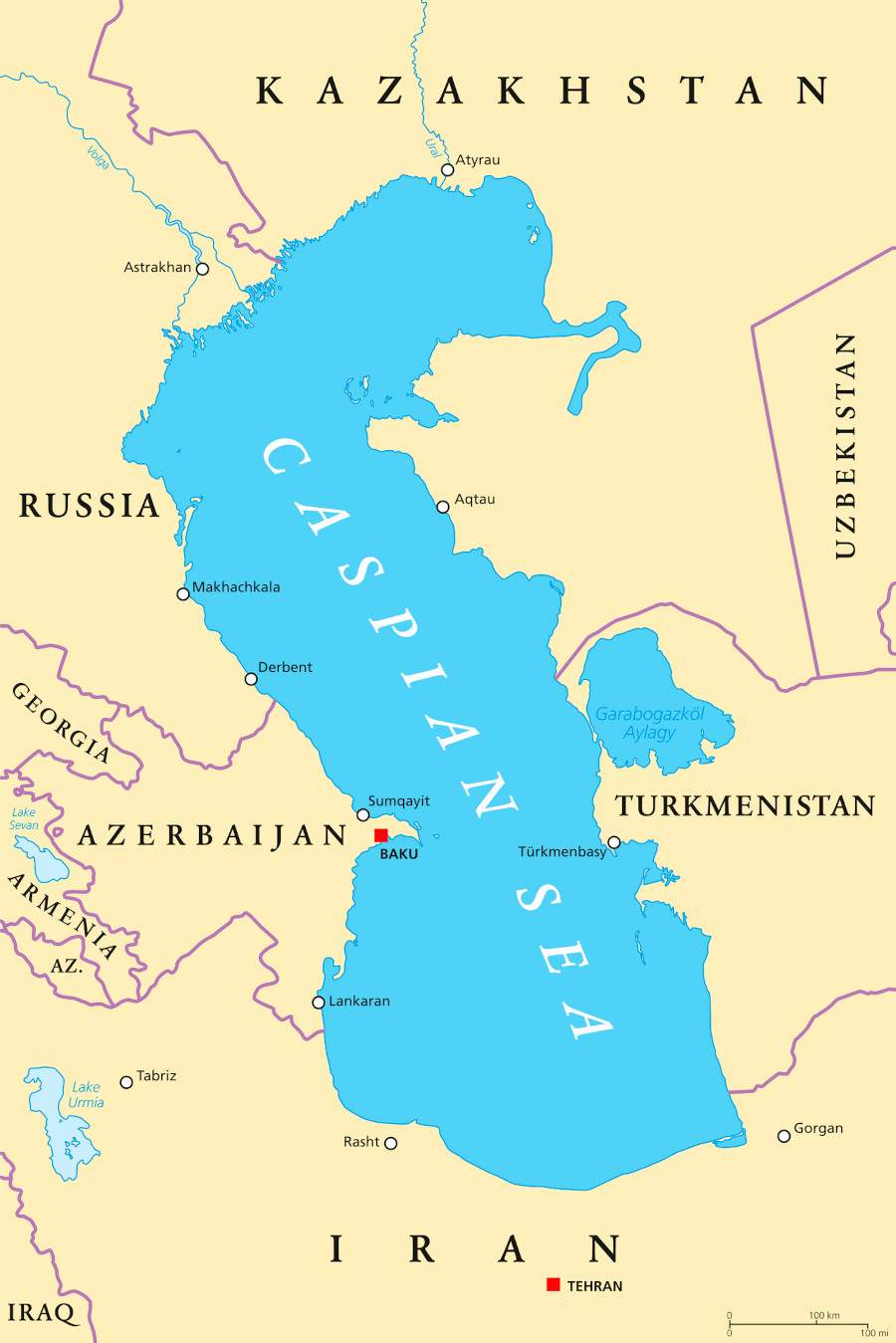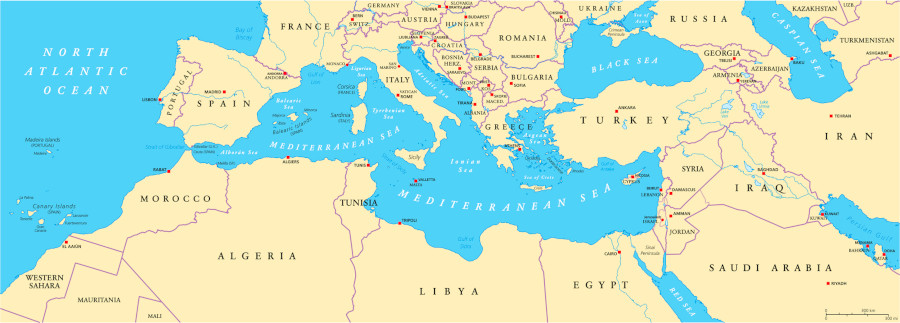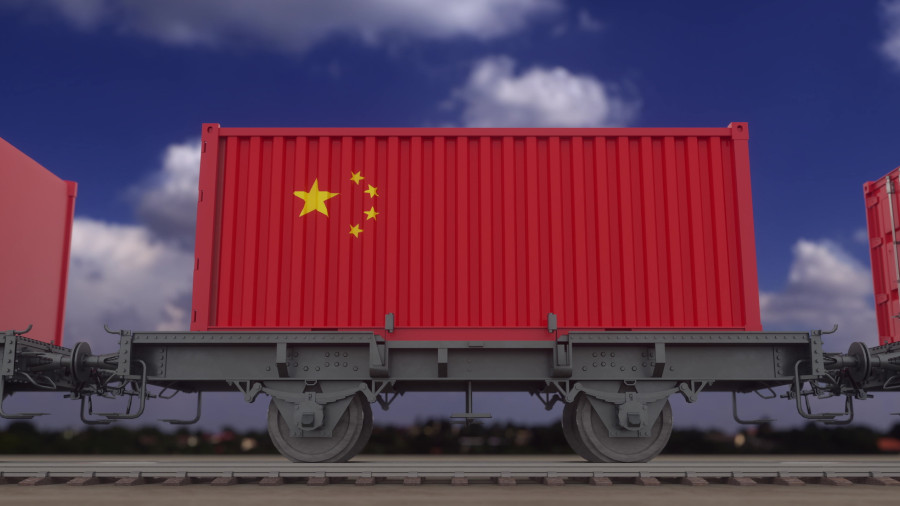How Damaging Are Russian Sanctions On China-EU Rail Trade And The Belt & Road Initiative ?
The Southern, Caspian Seaports Are Set For A Development Boom
by Chris Devonshire-Ellis
A growing awareness of sanctions spill-over is mounting followings sanctions on Russia and the impact of this on Chinese and Asian goods transiting the country to destinations in the European Union. In fact, the issue can be broken down into three parts: is the impact upon Eurasian road and rail connectivity between China and the EU a deliberate ‘hidden’ sanctions policy, what real sanctions impact affects the road/rail routes between Asia, Russia and the EU, and what alternatives are there?
Are the sanctions impacting the BRI deliberate?
The BRI hasn’t been mentioned as a reason for imposing sanctions, which have all been in response to Russia’s invasion of Ukraine. However, this doesn’t necessarily mean that the impact upon the BRI isn’t a welcomed side effect by the West – both the United States and the European Union have regularly criticized the BRI and both have recently come up with financing alternatives to it – the US ‘Build Back Better World’ and the EU’s ‘Global Gateway’ programmes.
The EU especially has been critical of the amount of Chinese investment into European ports and EU border infrastructure builds, and has viewed groups such as the Cooperation Between China, Central and Eastern Europe Countries (CEEC) as somewhat subversive. Brussels has criticized infrastructure builds between EU and non-EU countries, most notably the Budapest-Belgrade railway. It also refused to bail out Montenegro and its US$1 billion shortfall for the proposed highway through to Bars Port, which although is not on EU territory is thought to be beneficial to the EU’s Balkan members states lacking port access.
But on the other hand, the EU has recently signed a deal with China to finance a rail link through Turkey, with both the China backed Asian Infrastructure Investment Bank (AIIB) and the European Bank for Reconstruction and Development (EBRD). They are extending loans to the Turkish government for the construction of a 67 km section of the high-speed railway line from Istanbul to the Bulgarian border. Full details can be seen here, while the stakeholder plan can be downloaded here. The EBRD signed off the deal just four months ago, suggesting that cooperation with China along the BRI is not dead, nor discouraged. However, that agreement was signed while Angela Merkel was still the German Chancellor, and as we have seen with the abrupt termination of Nordstream 2 following her retirement, a few months at this time in global geopolitics can instigate many changes.
There is also the sheer volume of traffic heading between China and the EU – 2021 transit, although not all of that went via Russia – increased by over 100%. According to China’s State rail operator, a record 15,183 train trips were made along the Eurasia route last year, transporting 1.46 million twenty-foot equivalent unit (TEU) containers. If the intention is to damage China-EU BRI connectivity, then a huge amount China-EU trade needs to be replaced with alternative products, and while feasible, this would both lead to immediate shortages of products, rising prices, and mass EU consumer discontent. Accordingly, my view is that the damage caused by the problems within the China-Eurasian-EU connectivity are not wholly intentional. That implies solutions and alternatives are now on the agenda.
Goods Transiting Russia
The full impact of sanctions upon Russia will be felt by supply chains initially, and wary of being caught out will mean that bottlenecks and delays will inevitably occur. The issue with many of the sanctions is that they are broad and not often specific – including issues such as transportation, insurance, and communications within Russia, all vital parts of transit logistics. There are issues with dual purpose doing business with Russia’s state-owned companies, including use of its rail service. There are two elements to this: first, that alternatives need to be found now, and the responsive impact of these sanctions is likely to last for much of 2022 and 2023. However, it is not uncommon for sanctions to be revised, and areas deemed where the punitive impact is thought too serious (and especially upon EU businesses) then certain sanctions may be better verified, amended, or even discarded. However, this will take time to filter through from the supply chain operators and consumers to the politicians responsible for such actions. Given that the EU needs all members to sign off, it may be some time before bottlenecks, delays, and even out and out deliveries through Russia could be normalized. That doesn’t necessarily mean the routes are dead – but they are certainly going to be slow for some time to come as Port operators and transportation companies avoid Russia. That means alternatives to transiting Russia (and Belarus) need to be found.
The Southern Belt & Road Rail Route
China has in fact long prepared for alternative supply chains, and alternative sources for the supplies it needs – precisely because it has been well aware of the damage sanctions can do. Although the obvious direct route is the wholly overland China-Kazakhstan-Russia/Belarus-EU, alternatives exist, and this will be of benefit to Caspian Sea logistics and maritime operators.
The Kazakhstan route to Europe also has a southern spur, leading to the Kazakh Caspian Sea Port at Aqtau. This is being further developed with new facilities at nearby Kuryk Port. There will be bottleneck issues as Kazakhstan’s Caspian Ports now require even more expansion and investment. This was partially discussed at the recent Caspian Sea Ports & Shipping Conference 2021 which took place last October, speakers at that event will be well primed to discuss further Caspian Sea Port developments and the suitability for these to take up the strain of the Russian routes being off-limits. In fact, the Caspian Sea is about to become an investors development hot spot, assuming that the EU sees the development and re-routing of Chinese exports as something it embraces. Doing so – or not – will reveal the extent of EU ambivalence towards the BRI and whether or not Russian sanctions impacting China supply chains are a deliberate by-product or not.

It is not just Kazakhstan’s Caspian Ports that will now come under development scrutiny. Azerbaijan’s Baku Port is already well established and a mere 470km from Aqtau with shipping taking about 28 hours port to port. From there, TEU rejoin rail links across the Caucasus, through Georgia and onto its just completed major Black Sea Port facility at Poti. The Georgian-American transport company PACE Group, the country’s largest, opened a new multifunctional marine terminal in the port of Poti on the 29th January this year. That has turned out to be perfectly timed to take over the increased Chinese, Kazakh and other Central Asian cargo that was until now transported via Russian ports.

There are also rail links along the planned Baku-Tbilisi-Kars (BTK) route to join Turkey’s national rail network, although despite the early hype, serious problems have arisen with connectivity issues and the route is far from ready. Should the EU want to encourage China-Asian overland trade and supply chains, then they will need to step in to assist – a sign that they may do so is their recent signing off on the Istanbul-Bulgarian railway mentioned earlier.
There are other benefits for the EU in embracing the Southern Belt and Road routes. Firstly, they provide an alternative to the Suez canal, which as we saw recently with container ship blockages, is not without its problems. EU rail connectivity via Georgia would be politically sound for both – Georgia made an official request to join the European Union last week and already has a ‘Deep and Comprehensive Free Trade Agreement’ with the EU.
From Georgia it is only a short rail distance east to Azerbaijan’s Baku Port and connectivity via the Caspian Sea to Kazakhstan’s Aqtau Port and onwards to China, or to the International North-South Transportation Corridor INSTC, which sees Baku shipping south to Anzali Port on Iran’s Caspian Sea coast, join the Iranian rail network and head to either Chabahar or Bandar Abbas Ports on the Gulf. That gives maritime access east to India, and Mumbai, to the Gulf (Iran has just agreed maritime connectivity and developments with Qatar) as well as to East Africa.
There are also connections from Baku to Central Asia, where Uzbekistan is rapidly becoming a prized EU bilateral trade market. Access is via the rapidly opening Turkmenistan, and its Turkmenbashi Caspian Sea Port, rail connectivity is being put in place to link up with Uzbekistan, and Afghanistan – a market that EU contractors may have eyes on in terms of national reconstruction. Chinese companies are already looking at opportunities in Turkmenistan’s transit and logistics potential.
In short, the Belt and Road Initiative’s Southern route – multimodal – avoids Russia while improving the EU’s access to Turkey, the Caucasus, Central Asia, the Middle east, East Africa, India, and China.
So, to answer the media headlines about Russia destroying China’s Belt and Road Initiative – that, like much about the BRI, is just lazy reporting. Will there be supply chain bottleneck, delays and re-routing? Yes.
But what the Ukraine conflict has done is two-fold: concentrate supply chain minds on the necessity to have alternative back-ups, and to focus the BRI on its southern, Russia-avoiding routes. Foreign investment into the Caspian region and along the Southern BRI routes is going to boom.
Related Reading
About Us
Chris Devonshire-Ellis is the Chairman of Dezan Shira & Associates. The firm assists British and Foreign Investment into Asia and has 28 offices throughout China, India, the ASEAN nations and Russia. For strategic and business intelligence concerning China’s Belt & Road Initiative please email silkroad@dezshira.com or visit us at www.dezshira.com






